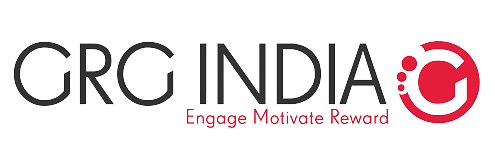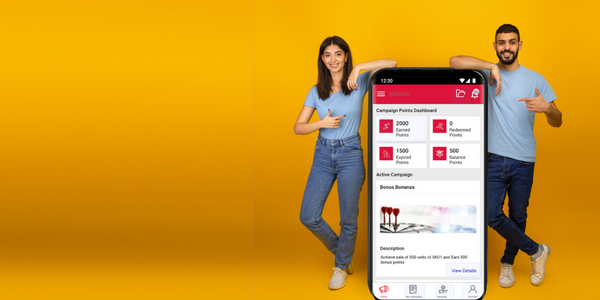Ideas to Improve the Sales Motivation of Your Retail Employees

Ideas to Improve the Sales Motivation of Your Retail Employees

In the modern digital age, the retail industry has newer challenges and roadblocks, especially with e-commerce and online sales registering phenomenal results. Besides, in the physical space, there’s increased competition and the never-ending battle to squeeze prices. In many ways, customers today are not completely dependent on retail associates to help them during the buying process. Most of your consumers today have enough knowledge about the product or service giving rise to the self-sufficient shopping trend.
The scenario for the global retail industry is pretty grim. Amidst all this, WorldatWork mentions that for store employees, the average turnover is about 65%. Hiring new staff, training, and replacing costs work out high and are not a viable option for most business owners.
And to top it off, a survey in 2019 mentions that about 58% of retail professionals are not too happy with their employees. 60% of the respondents mention that their salary is crucial for them while 55% said that they wish to develop their skills in the workplace.
Taking all of this into account, it is imperative to put together an improved, realistic, and adaptable sales motivation program for your retail team. Here are six proven ways to do so.
Infuse family-friendly features into the ecosystem
Retail workers generally need to work long hours. Their shift times are often extended, they fill in for other team members many a time, etc. The on-the-job stress levels are pretty high unquestionably. Plus, customer service in a retail ecosystem is a pretty demanding job with most customers expecting personalized services.
Therefore, it is a good idea to make the workplace friendly for your workers. For example, during break time, workers can be allowed to catch up with their kids, siblings, or parents and de-stress. There could be creche facility for working mothers or special restrooms for workers that can be created for rest, a quick nap, etc. The restrooms can be equipped with comfortable beds, chairs, sofas, serviced with drinking water, tea/coffee stations, fruits, snacks, etc. Or, retailers could let their staff members have flexible work hours so that they can balance work-life appropriately.
Steps like these can drive higher employee engagement in retail stores. Initiatives like these can make your workforce stay happy and relaxed offering them a level playing field to give their best performance.
Challenge your retail team with a well-designed monetary incentive program
An essential aspect of retail employee motivation is to bestow them with interesting R&R (Rewards & Recognition) programs. Yes, salary is the most relevant monetary incentive. But other financial benefits should be also weaved in to keep employees completely motivated. Why? Because the retail staff expects this. Not just that, robust financial incentives help retain employees for a longer time.
Pay raises at periodic gaps, promotions, retirement benefits, travel allowances, yearly bonuses, etc. are common and effective aspects. However, for top-of-the-line performances, especially for workers who are consistent, something beyond this is required. Consider options like commission percentages, OTE or on-target earnings, stock options, profit sharing, etc.
Employers need to take care that the reward system is fair and the right people are getting incentivized. Besides, the incentive program must be open to all. While the top performers get the best raises, it is important to keep providing monetary benefits to all who participated. This is to keep everyone pepped up and motivated.
Non-monetary rewards play a significant role too
The best is a combination of monetary and non-monetary rewards. Along with financial benefits, offer a strong recognition program because today employees are not just looking at monetary compensation. Yes, money is the bottom line but that is not going to fetch you loyalty. The work culture should be healthy and progressive to take your retail staff along with you for long.
Non-monetary recognition programs are the best way to appreciate the staff for their work. These programs go beyond the normal to seal the employee-employer bond. Things like Employee of the month, team outings, discounts on products and services of other retail stores, discounts on in-house products & services, movie tickets, weekend breakfasts, lunches or dinners with seniors, etc. are some brilliant ideas to keep the retail staff engaged.
Take the case of Arby’s. They have a ‘Halfway There’ campaign where employees are given gift cards presented to them by their managers when they reach the halfway mark of their targets.
Other forms of non-monetary rewards that should be integrated into the system include recognition initiatives like sharing good comments from customers for everyone to see, getting peers to vote to rank the best performers, sharing success stories of retail sales members with pictures, and videos, etc.
Take the help of digitised platforms like My Incentives that integrate end-to-end all these functionalities with real-time access for one and all. Helps streamline your R&R initiatives maintaining transparency and ensuing retail employees to stay connected across different geographical regions.
Development opportunities
Your employees will stick around when they see professional development opportunities in your organization. Everyone wants to move up the ladder and you need to give them the right opportunity to do so.
Learning new skills, training workshops, sessions to reinforce skills, etc. can make a difference in their onward progression journey. When your organization makes sincere attempts to train and develop staff members, turnover rates are also going to be positively impacted.
Make it all about teamwork
In the retail store, teamwork can make team members bond better. Therefore, work schedules should be such that everyone is assigned multiple rotating tasks rather than them doing one task all the time. This will make them collaborate better.
Assigning work in this manner also makes it all fair and drives out the mystery aspect of what others are doing. Every staff member has an idea of what each of them is involved in. Nobody feels sidelined that they are doing anything less important than their peer.
Work schedules should include the entire spectrum of jobs and duties in the retail store. For example, tasks like keeping the store organized and clean should be part of everybody’s day-to-day activity. Keeping the items back on the correct shelves, maintaining a stock of things, maintaining the cash register, tracking sales for the day, addressing customer complaints, meeting and greeting customers, showing them around, etc., should be made a part of all on-the-floor staff. It can do wonders to employee engagement and motivation levels.
In the modern digital age, the retail industry has newer challenges and roadblocks, especially with e-commerce and online sales registering phenomenal results. Besides, in the physical space, there’s increased competition and the never-ending battle to squeeze prices. In many ways, customers today are not completely dependent on retail associates to help them during the buying process. Most of your consumers today have enough knowledge about the product or service giving rise to the self-sufficient shopping trend.
The scenario for the global retail industry is pretty grim. Amidst all this, WorldatWork mentions that for store employees, the average turnover is about 65%. Hiring new staff, training, and replacing costs work out high and are not a viable option for most business owners.
And to top it off, a survey in 2019 mentions that about 58% of retail professionals are not too happy with their employees. 60% of the respondents mention that their salary is crucial for them while 55% said that they wish to develop their skills in the workplace.
Taking all of this into account, it is imperative to put together an improved, realistic, and adaptable sales motivation program for your retail team. Here are six proven ways to do so.
Infuse family-friendly features into the ecosystem
Retail workers generally need to work long hours. Their shift times are often extended, they fill in for other team members many a time, etc. The on-the-job stress levels are pretty high unquestionably. Plus, customer service in a retail ecosystem is a pretty demanding job with most customers expecting personalized services.
Therefore, it is a good idea to make the workplace friendly for your workers. For example, during break time, workers can be allowed to catch up with their kids, siblings, or parents and de-stress. There could be creche facility for working mothers or special restrooms for workers that can be created for rest, a quick nap, etc. The restrooms can be equipped with comfortable beds, chairs, sofas, serviced with drinking water, tea/coffee stations, fruits, snacks, etc. Or, retailers could let their staff members have flexible work hours so that they can balance work-life appropriately.
Steps like these can drive higher employee engagement in retail stores. Initiatives like these can make your workforce stay happy and relaxed offering them a level playing field to give their best performance.
Challenge your retail team with a well-designed monetary incentive program
An essential aspect of retail employee motivation is to bestow them with interesting R&R (Rewards & Recognition) programs. Yes, salary is the most relevant monetary incentive. But other financial benefits should be also weaved in to keep employees completely motivated. Why? Because the retail staff expects this. Not just that, robust financial incentives help retain employees for a longer time.
Pay raises at periodic gaps, promotions, retirement benefits, travel allowances, yearly bonuses, etc. are common and effective aspects. However, for top-of-the-line performances, especially for workers who are consistent, something beyond this is required. Consider options like commission percentages, OTE or on-target earnings, stock options, profit sharing, etc.
Employers need to take care that the reward system is fair and the right people are getting incentivized. Besides, the incentive program must be open to all. While the top performers get the best raises, it is important to keep providing monetary benefits to all who participated. This is to keep everyone pepped up and motivated.
Non-monetary rewards play a significant role too
The best is a combination of monetary and non-monetary rewards. Along with financial benefits, offer a strong recognition program because today employees are not just looking at monetary compensation. Yes, money is the bottom line but that is not going to fetch you loyalty. The work culture should be healthy and progressive to take your retail staff along with you for long.
Non-monetary recognition programs are the best way to appreciate the staff for their work. These programs go beyond the normal to seal the employee-employer bond. Things like Employee of the month, team outings, discounts on products and services of other retail stores, discounts on in-house products & services, movie tickets, weekend breakfasts, lunches or dinners with seniors, etc. are some brilliant ideas to keep the retail staff engaged.
Take the case of Arby’s. They have a ‘Halfway There’ campaign where employees are given gift cards presented to them by their managers when they reach the halfway mark of their targets.
Other forms of non-monetary rewards that should be integrated into the system include recognition initiatives like sharing good comments from customers for everyone to see, getting peers to vote to rank the best performers, sharing success stories of retail sales members with pictures, and videos, etc.
Take the help of digitised platforms like My Incentives that integrate end-to-end all these functionalities with real-time access for one and all. Helps streamline your R&R initiatives maintaining transparency and ensuing retail employees to stay connected across different geographical regions.
Development opportunities
Your employees will stick around when they see professional development opportunities in your organization. Everyone wants to move up the ladder and you need to give them the right opportunity to do so.
Learning new skills, training workshops, sessions to reinforce skills, etc. can make a difference in their onward progression journey. When your organization makes sincere attempts to train and develop staff members, turnover rates are also going to be positively impacted.
Make it all about teamwork
In the retail store, teamwork can make team members bond better. Therefore, work schedules should be such that everyone is assigned multiple rotating tasks rather than them doing one task all the time. This will make them collaborate better.
Assigning work in this manner also makes it all fair and drives out the mystery aspect of what others are doing. Every staff member has an idea of what each of them is involved in. Nobody feels sidelined that they are doing anything less important than their peer.
Work schedules should include the entire spectrum of jobs and duties in the retail store. For example, tasks like keeping the store organized and clean should be part of everybody’s day-to-day activity. Keeping the items back on the correct shelves, maintaining a stock of things, maintaining the cash register, tracking sales for the day, addressing customer complaints, meeting and greeting customers, showing them around, etc., should be made a part of all on-the-floor staff. It can do wonders to employee engagement and motivation levels.





